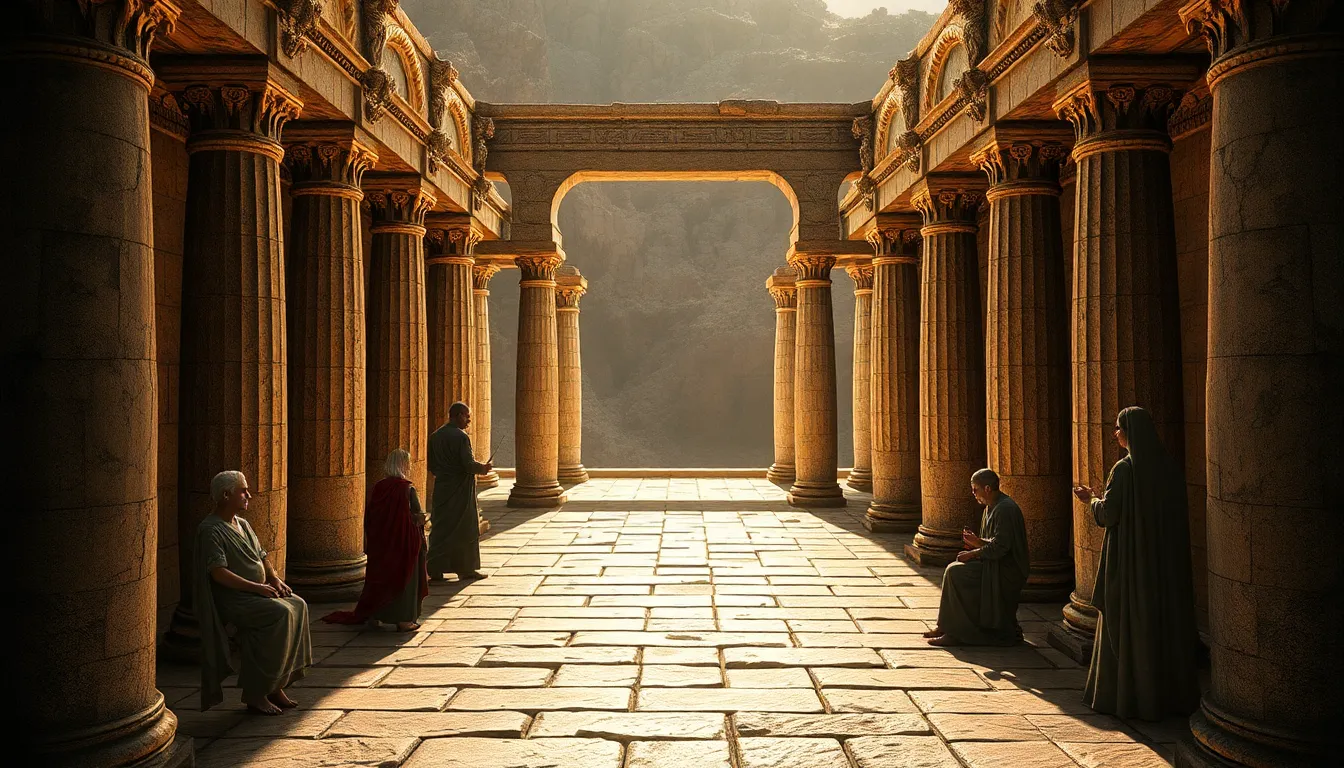The Mysteries of the Samothracian Festivals: Secrets of the Initiates
I. Introduction to the Samothracian Festivals
The island of Samothrace, located in the northern Aegean Sea, is renowned for its stunning natural beauty and rich historical significance. This small island was the site of one of the most enigmatic mystery religions of ancient Greece—the Samothracian Festivals. These festivals attracted pilgrims from across the Greek world, drawn by the promise of spiritual initiation and divine revelation.
The Samothracian Festivals were celebrated in honor of the Great Gods, a triad of deities revered by the initiates. These festivals were not merely religious observances; they represented a profound spiritual journey that offered insights into the mysteries of life and death. The concept of mystery religions in ancient Greece encompasses a variety of esoteric traditions that emphasized personal experience and initiation over mere public worship.
II. The Origins of the Samothracian Mysteries
To understand the Samothracian Mysteries, one must delve into their mythological background. According to legend, the mysteries were founded by the hero Kadmos, who brought sacred practices from Phoenicia to the island. The myths surrounding the Great Gods reveal a pantheon that includes deities associated with fertility, protection, and the afterlife.
- Key Deities:
- Demeter – Goddess of agriculture and fertility.
- Persephone – Goddess of the underworld and springtime.
- Hecate – Associated with magic and the moon.
The historical emergence of the festivals can be traced back to the 5th century BCE, gaining popularity among the Greeks and even attracting Roman pilgrims. This growing significance transformed the festivals into a major religious event that emphasized community, spirituality, and personal transformation.
III. The Festival Rituals: A Closer Look
The initiation process in the Samothracian Mysteries was shrouded in secrecy, with initiates undergoing a series of rituals that would lead to a profound spiritual awakening. The process generally involved the following stages:
- Preparation: Initiates would undergo a period of purification, often involving fasting and abstaining from certain activities.
- Initiation: This was the central ceremony, often conducted in the presence of a priest or priestess, where sacred symbols and chants were used to invoke the deities.
- Revelation: Initiates would receive personal insights or visions believed to be messages from the gods.
The rituals included various ceremonies, such as processions, sacrifices, and dramatic reenactments of mythological tales. Initiates often described their experiences as transformative, leading to a deeper understanding of existence and the universe.
IV. Symbolism and Meaning Behind the Mysteries
The Samothracian Mysteries were rich in symbolism, with many artifacts unearthed from the site providing insight into their deeper meanings. Key symbols included:
- The Labyrinth: Represented the journey of the soul through life and death.
- Torches: Symbolized illumination and the quest for knowledge.
- Seashells: Often associated with fertility and rebirth.
The sacred geography of Samothrace also played a crucial role in the mysteries. The island’s rugged terrain and natural springs were believed to be imbued with divine energy, enhancing the initiatory experience. The relationship between the mysteries and the cosmos was evident, as many rituals were timed to celestial events, highlighting the connection between the divine and the natural world.
V. The Role of the Gods and Goddesses
The central figures in Samothracian worship were the Great Gods, whose identities were closely guarded secrets. The cult of the Great Gods was a major aspect of the festivals, focusing on their powers and influence over human affairs.
- Who Were the Great Gods?
- The three primary deities were often connected with themes of life, death, and rebirth.
- They were worshipped through elaborate rituals that underscored their importance in the lives of the initiates.
Comparative analysis with other mystery religions reveals similarities in the use of secret knowledge, initiation rites, and the quest for personal transformation. However, the Samothracian Mysteries remained unique in their emphasis on the collective experience of the community.
VI. The Impact of the Mysteries on Ancient Greek Society
The Samothracian Festivals had profound social and cultural implications for ancient Greek society. They fostered a sense of community among initiates, encouraging social cohesion and shared spiritual goals. The festivals influenced various aspects of Greek culture, including:
- Philosophy: The mysteries contributed to philosophical discussions about the nature of the soul and the afterlife.
- Art: Artistic representations of the mysteries can be found in pottery, sculpture, and temple architecture.
- Literature: Many ancient texts reference the mysteries, reflecting their significance in Greek thought.
The mysteries served as a means of personal transformation, providing initiates with insights that could alter their perceptions of life and death. This transformative power was a key element of their allure and lasting impact.
VII. The Decline and Legacy of the Samothracian Festivals
The decline of the Samothracian Mysteries can be attributed to several factors, including the rise of Christianity, changes in religious practices, and the political turmoil of the Roman Empire. As the ancient world transformed, the mysteries faded from prominence, but their legacy endured.
Throughout history, knowledge and practices associated with the Samothracian Mysteries were preserved in various forms. Scholars and practitioners have sought to understand and revive these ancient traditions, leading to modern interpretations that continue to resonate today.
VIII. Conclusion: The Enduring Allure of the Samothracian Mysteries
The Samothracian Mysteries remain a subject of fascination for historians, archaeologists, and spiritual seekers alike. Their relevance today lies in the ongoing quest for understanding ancient spiritual practices and their implications for contemporary life.
As we reflect on the legacy of the initiates and their secrets, we recognize that the Samothracian Festivals were more than mere religious observances; they were profound experiences that connected individuals to the divine and to each other. The mysteries continue to inspire a search for deeper truths and a yearning for spiritual connection in our modern world.




